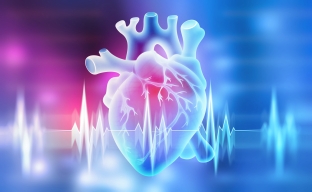Treating Blocked Coronary Arteries
From an interview with
Dr. Alan Blaker
McLeod Cardiology Associates
Coronary arteries supply blood to the heart muscle. Like all other tissues in the body, the heart muscle needs oxygen-rich blood to function. Also, oxygen-depleted blood must be carried away.
There are two coronary arteries: the right coronary artery (RCA) and the left main coronary artery (LMCA). Both wrap around the outside of the heart and are usually between 3 and 4 millimeters in diameter – just a little smaller than the width of a drinking straw.
Coronary artery disease is the most common type of heart disease, affecting more than 20 million adults age 20 and older. The following are comments from McLeod cardiologist Dr. Alan Blaker about this condition, which took the lives of nearly 383,000 people in 2020:
“Coronary artery disease (CAD) is a heart condition that occurs when the major blood vessels that supply the heart (coronary arteries) struggle to send enough blood, oxygen and nutrients to the heart muscle. Cholesterol deposits (called “plaque”) in the heart arteries and inflammation are usually the causes of coronary artery disease.
With blocked coronary arteries, the standard treatment is to open the artery with a small balloon attached to a catheter and over a wire placed across the blockage. Frequently a stent – a small metal mesh tube – is then placed into the artery to keep it open.
In some people, the soft plaque in the arteries hardens due to heavy deposits of calcium. For patients with severely calcified arteries, this can present complications. The amount of calcification directly correlates to the risk of coronary artery disease and heart attacks.
To restore blood flow to the heart, McLeod interventional cardiologists use intravascular lithotripsy, which allows the safe penetration of the hardened calcium using sonic pressure waves.
Calcium buildup in the coronary arteries is not reversible, but with the therapy at McLeod for the treatment of advanced heart disease, more patients are returning to a quality of life they once knew.”
Find a cardiologist near you.
-
McLEOD REGIONAL MEDICAL CENTER FLORENCE
843-777-2000 -
McLEOD DARLINGTON
843-777-1100 -
McLEOD DILLON
843-774-4111 -
McLEOD LORIS
843-716-7000 -
McLEOD SEACOAST
843-390-8100 -
McLEOD CHERAW
843-537-7881 -
McLEOD CLARENDON
803-433-3000



-
McLEOD REGIONAL MEDICAL CENTER FLORENCE
843-777-2000 -
McLEOD DARLINGTON
843-777-1100 -
McLEOD DILLON
843-774-4111 -
McLEOD LORIS
843-716-7000 -
McLEOD SEACOAST
843-390-8100 -
McLEOD CHERAW
843-537-7881 -
McLEOD CLARENDON
803-433-3000
 Find a Doctor
Find a Doctor  Locations
Locations  Services
Services 